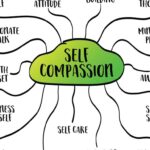Wherever you live, you’ve been affected by the Covid years. All of us are suffering in one way or another. Lost loved ones and lost jobs are two tragedies we’ve faced. Sadly, you may be affected by financial hardship and don’t know what to do. If you are experiencing financial difficulties right now, don’t despair. Let’s explore the warning signs of financial hardship as well as steps you can take to recover from it. And you can recover.
5 Warning Signs Of Financial Hardship
Before we get into the steps you can take to recover from financial hardship, let’s first discuss the warning signs. That way, you’ll be able to identify whether these situations resonate with you.
- You’re struggling to make ends meet
- You’re unable to pay your bills on time
- You’re using credit cards more frequently
- You’re taking out payday loans
- You’re experiencing changes in your work situation
Keep in mind that financial hardship can lead to physical and mental health problems, which in turn can lead to more financial problems. If you’re experiencing any of the above mentioned warning signs, it’s important to seek help for your emotional health and wellness as soon as possible.
6 Steps To Recover From Financial Hardship
If you’re experiencing financial hardship, there are a number of steps you can take to recover from it. And the first is to assess your situation.
- Assess Your Financial Situation
The first step you need to take is to assess your financial situation. This means taking a close look at your income, your expenses, and your debts. This will give you a clear picture of your financial situation and will help you develop a plan to get out of debt.
You can use a budgeting app or spreadsheet to help you assess your financial situation. We recommend the latter because it’s usually free. You should also try Westpac’s mortgage calculator to determine the trajectory of your home loan.
In addition to assessing your financial situation, it’s also important to understand your overall life situation. That’s because sometimes, money worries stem from mental health problems such as compulsive spending and substance abuse disorder. So before you can begin to address your financial woes, you must analyze and treat their cause.
Once you have a clear picture of your finances, you can start working on a plan to get out of difficulty.
- Create A Budget And Stick To It
Once you’ve assessed your financial situation, the next step is to create a budget. This will help you identify where you can cut back on your spending and how much money you need to save each month. It’s important to be realistic when creating your budget. And you should make sure that you can stick to it. This means avoiding unnecessary purchases and sticking to your budget even when times are tough. There are a number of helpful apps and websites that can help you create a budget. These include:
- You Need a Budget
- Mint
- EveryDollar
Once you’ve created your budget, make sure to track your progress and adjust it as needed.
- Develop A Debt Recovery
Debt is a major cause (as well as a consequence) of financial hardship. And if you’re in debt, it’s important to develop a plan to get out of it. There are a number of different ways to get out of debt — the best way for you will depend on your individual circumstances. If you’re struggling with debt, you can consider some of the following options:
- Debt consolidation. This refers to taking out a new loan to pay off your existing debts. This can help you get out of debt by simplifying your monthly payments and giving you a lower interest rate.
- Debt settlement
- Credit counseling
- Bankruptcy
If you’re not sure where to start, there are a number of helpful resources that can assist you. These include:
- National Debt Relief
- American Consumer Credit Counseling
- credit.org
Remember, making the decision to get out of debt is a major step. But it’s one that can help you improve your financial situation and get back on track.
- Research Financial Hardship Programs
If you’re struggling to make ends meet, there are a number of financial hardship programs that can help. These programs can provide you with assistance with your bills, housing, and food.
Some of the most popular financial hardship programs include:
- The Low Income Home Energy Assistance Program (LIHEAP)
- The Supplemental Nutrition Assistance Program (SNAP)
- The Temporary Assistance for Needy Families (TANF)
- The National School Lunch Program (NSLP)
In addition to these, you also have down payment assistance programs and first-time home buyer programs. These allow you to purchase a home with a lower down payment and can make it easier to qualify for a mortgage.
- Make Use Of The Gig Economy
Although the pandemic has resulted in a lot of financial hardship, it has also created opportunities in the gig economy.
The gig economy refers to the growing trend of people working short-term or freelance jobs. This can include everything from driving for Uber to delivering food to working as a freelance art designer.
To make the best use of the gig economy, your best bet is signing up on credible freelancing platforms like Fiverr and Upwork. You can also find a list of the best freelancing websites here.
Additionally, try to find a freelancing niche where you have some sort of prior knowledge or experience. For example, if you’re a web developer, you could start offering your services on Fiverr.
The gig economy can be a great way to make extra money. And it can also help you weather the financial challenges of the COVID-19 pandemic.
- Start Saving For Emergencies
If you’ve landed in financial hardship once, you can return to it again in the future. This means now is the right time to work towards an emergency fund. An emergency fund is a savings account that you can use in case of a financial emergency. This could include anything from losing your job to a medical emergency.
The simplest way to build an emergency fund is by setting aside a small amount of money each month. Even if you can only afford to save $50 per month, that’s still $600 per year. And over time, your emergency fund will grow. Also, have a plan for how you’ll use your emergency fund. This will help you make sure that you don’t touch it for non-emergency expenses.
A good rule of thumb is to only use your emergency fund for expenses that are absolutely necessary. This could include things like your mortgage payment or your food bill.
Final Thoughts
If you’re struggling with financial hardship, there are a number of steps you can take to get back on track. These include consolidating your debt, getting assistance from financial hardship programs, and making use of the gig economy. You should also start saving so you’re prepared for future challenges.
More Articles To Read About Money
Enabling Adult Children Who Only Want Money
12 Websites To Make Money Online
How To Stop Worrying About Money Problems





















